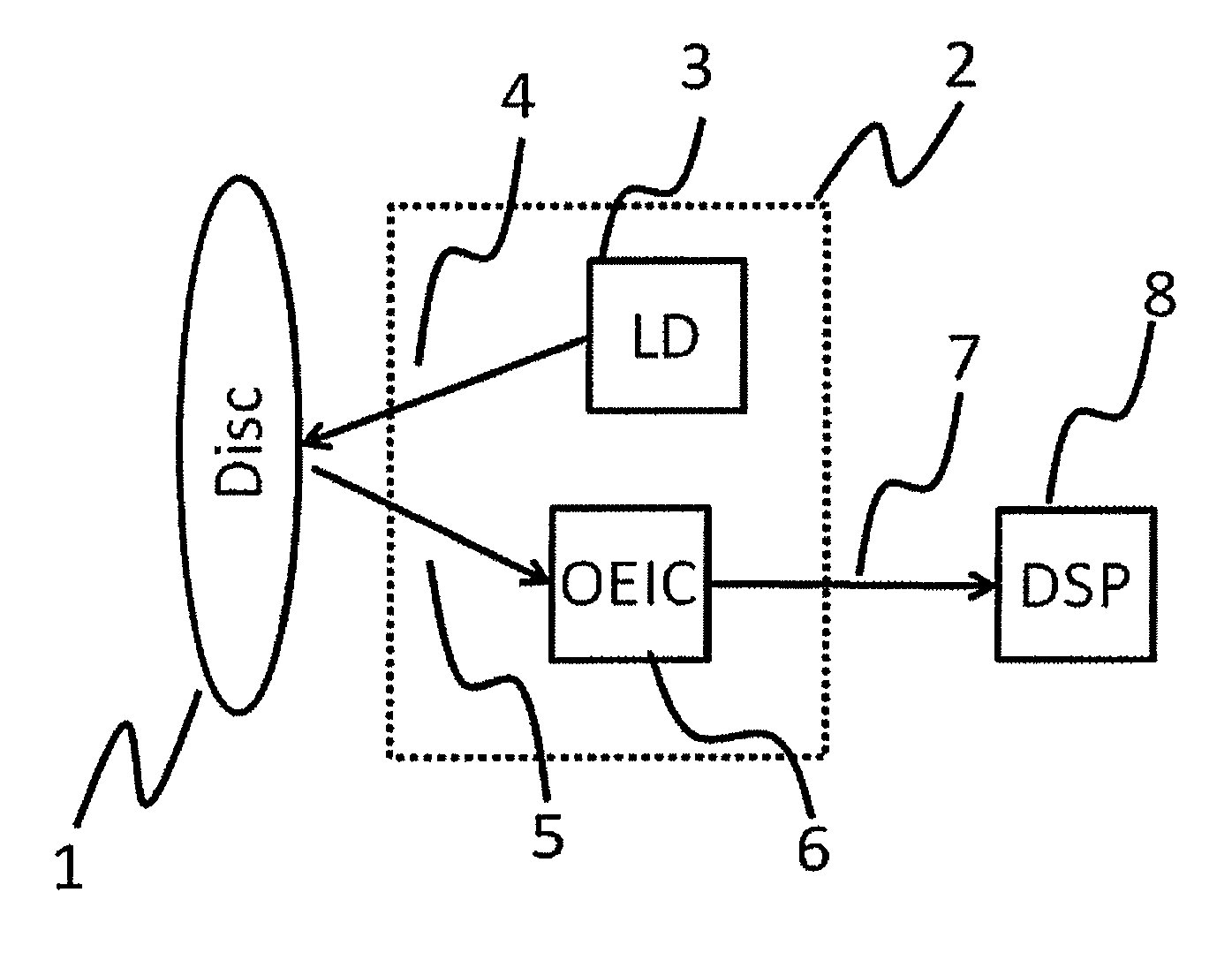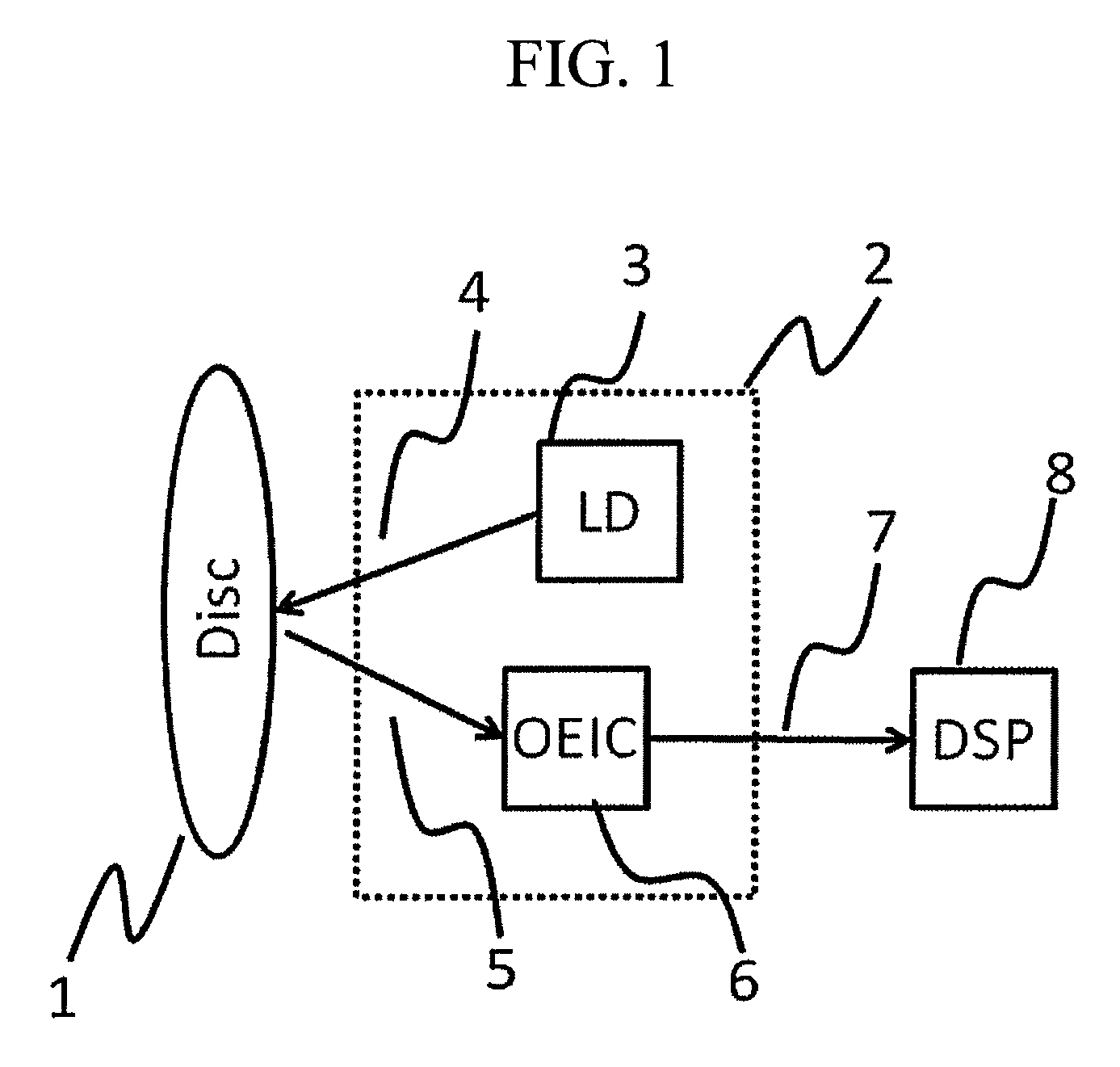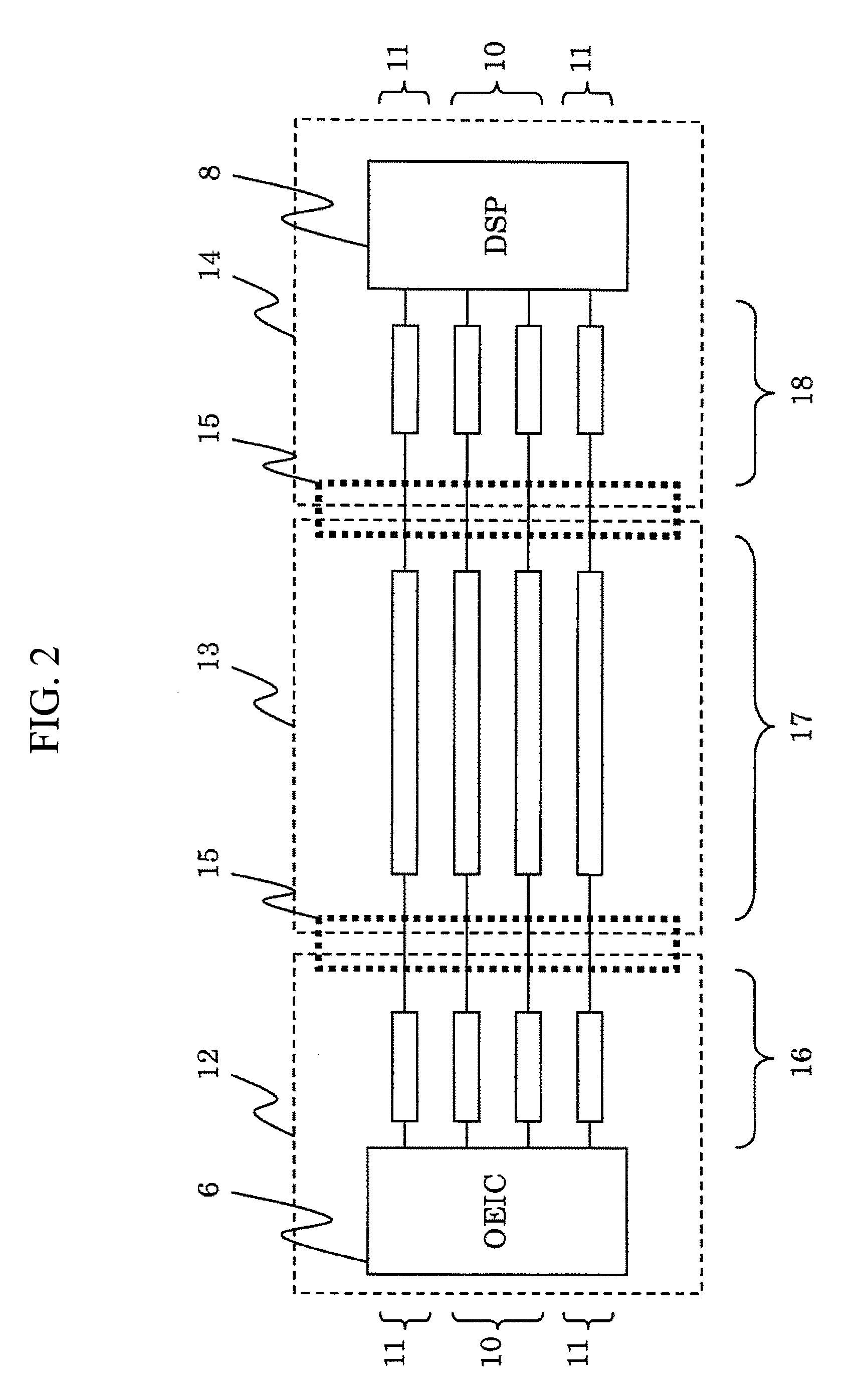Optical disc drive
a technology of optical disc drives and optical disc drives, applied in the field of optical disc drives, can solve the problems of waveform degradation, waveform ringing and signal rise/fall time degradation, and the loss of high-speed reading bandwidth margins, so as to reduce the output impedance of a photodetector and reduce the characteristic impedance. , the effect of reducing the output impedan
- Summary
- Abstract
- Description
- Claims
- Application Information
AI Technical Summary
Benefits of technology
Problems solved by technology
Method used
Image
Examples
embodiment 1
[0048]FIG. 3 is a configuration diagram of an optical disc drive according to Embodiment 1 of the present invention. Here, only the elements of a read signal transmission line that find correspondence in FIG. 2 are shown, and other general elements have been omitted.
[0049]In Embodiment 1, the two lines that form the differential transmission lines 10 are each further divided into two lines near the connection point between the first circuit board 12 and the flexible flat cable 13. Thus, at the lines 17 on the flexible flat cable 13, the differential transmission lines 10 are twice parallelized as compared to a conventional transmission line configuration. The divided lines are then re-integrated into one line near the connection point between the second circuit board 14 and the flexible flat cable 13.
[0050]With such a line configuration, as a result of the lines being parallelized at the section of the flexible flat cable 13 (i.e., at the lines 17), the inductance component of the d...
embodiment 2
[0051]FIG. 4 is a configuration diagram of an optical disc drive according to Embodiment 2 of the present invention. As in FIG. 3, only the elements of a read signal transmission line are shown, and other general elements have been omitted.
[0052]In Embodiment 2, the two lines forming the differential transmission lines 10 are each divided into two lines near the connection point between the first circuit board 12 and the flexible flat cable 13 as in Embodiment 1. Embodiment 2, however, differs from Embodiment 1 in that the lines are arranged in such a manner that lines that transmit antiphase differential signals are alternatingly adjacent to one another.
[0053]FIG. 5 is a diagram schematically showing an equivalent circuit for the line configuration shown in FIG. 4. For purposes of convenience, the circuit has been annotated with + and − signs to indicate the fact that the differential signals are of opposite phases.
[0054]As shown in FIGS. 4 and 5, when lines that transmit antiphase...
embodiments 1 and 2
Effects of Embodiments 1 and 2
[0055]Next, in order to confirm the effects of Embodiments 1 and 2, results of experiments independently conducted by the present inventors and of computer simulations are described. It is noted that the numerical values and elements indicated here are merely examples, and the present invention is not necessarily limited to these numerical values and elements.
[0056]FIG. 6 is a chart showing the results of evaluating the characteristic impedance of the flexible flat cable 13 (the lines 17) by itself. Here, flexible flat cables to be measured were connected to a coaxial cable 21 for measurement, and the characteristic impedance during differential transmission was evaluated using TDR (Time Domain Reflectometry). For purposes of comparison, the characteristic impedances of a conventional flexible flat cable and of the flexible flat cables 13 according to Embodiments 1 and 2 are presented alongside one another in FIG. 6.
[0057]In FIG. 6, the vertical axis re...
PUM
| Property | Measurement | Unit |
|---|---|---|
| output impedance | aaaaa | aaaaa |
| output impedance | aaaaa | aaaaa |
| length | aaaaa | aaaaa |
Abstract
Description
Claims
Application Information
 Login to View More
Login to View More - R&D
- Intellectual Property
- Life Sciences
- Materials
- Tech Scout
- Unparalleled Data Quality
- Higher Quality Content
- 60% Fewer Hallucinations
Browse by: Latest US Patents, China's latest patents, Technical Efficacy Thesaurus, Application Domain, Technology Topic, Popular Technical Reports.
© 2025 PatSnap. All rights reserved.Legal|Privacy policy|Modern Slavery Act Transparency Statement|Sitemap|About US| Contact US: help@patsnap.com



